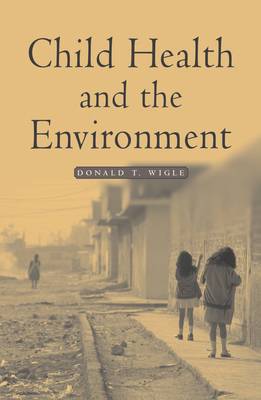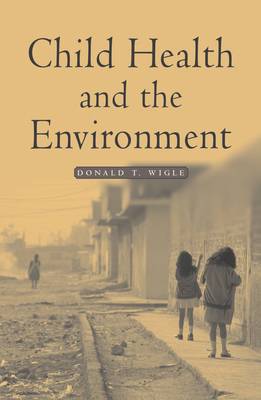
- Afhalen na 1 uur in een winkel met voorraad
- Gratis thuislevering in België vanaf € 30
- Ruim aanbod met 7 miljoen producten
- Afhalen na 1 uur in een winkel met voorraad
- Gratis thuislevering in België vanaf € 30
- Ruim aanbod met 7 miljoen producten
Zoeken
€ 124,45
+ 248 punten
Omschrijving
This is the first textbook to focus on environmental threats to child health. It will interest professionals and graduate students in public health, pediatrics, environmental health, epidemiology, and toxicology. The first three chapters provide overviews of key children's environmental health issues as well as the role of environmental epidemiology and risk assessment in child health protection. Overarching themes are the susceptibility of the rapidly developing fetus and infant to environmental toxicants, the importance of modifying factors(e.g. poverty, genetic traits, nutrition), the role of health outcome and exposure monitoring, uncertainties surrounding environmental exposure limits, and the importance of timely intervention.
Later chapters address the health effects of metals, PCBs, dioxins, pesticides, hormonally active agents, radiation, indoor and outdoor air pollution, and water contaminants. In analyzing potential environmental hazards, the author addresses both biologic and epidemiologic evidence, including the likelihood of causal relationships. Among the health outcomes he discusses are developmental, reproductive, and neurobehavioral effects, respiratory disease, cancer, and waterborne infectious diseases. These discussions cover environmental exposure sources/indicators, interventions, and standards, and conclude with a summary of calls for an improved science base to guide public health decisions and protect child health.
Later chapters address the health effects of metals, PCBs, dioxins, pesticides, hormonally active agents, radiation, indoor and outdoor air pollution, and water contaminants. In analyzing potential environmental hazards, the author addresses both biologic and epidemiologic evidence, including the likelihood of causal relationships. Among the health outcomes he discusses are developmental, reproductive, and neurobehavioral effects, respiratory disease, cancer, and waterborne infectious diseases. These discussions cover environmental exposure sources/indicators, interventions, and standards, and conclude with a summary of calls for an improved science base to guide public health decisions and protect child health.
Specificaties
Betrokkenen
- Auteur(s):
- Uitgeverij:
Inhoud
- Aantal bladzijden:
- 416
- Taal:
- Engels
- Reeks:
Eigenschappen
- Productcode (EAN):
- 9780195135596
- Verschijningsdatum:
- 20/03/2003
- Uitvoering:
- Hardcover
- Formaat:
- Genaaid
- Afmetingen:
- 164 mm x 241 mm
- Gewicht:
- 839 g

Alleen bij Standaard Boekhandel
+ 248 punten op je klantenkaart van Standaard Boekhandel
Beoordelingen
We publiceren alleen reviews die voldoen aan de voorwaarden voor reviews. Bekijk onze voorwaarden voor reviews.











